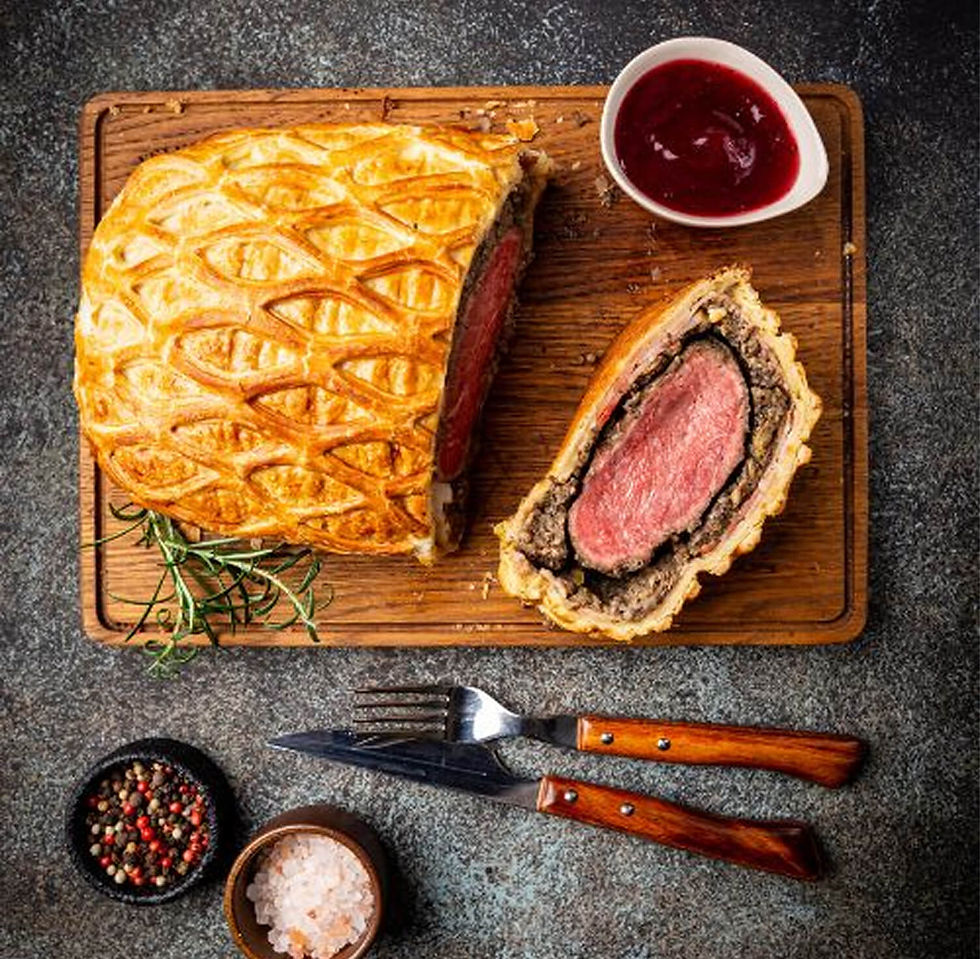The Backbone of AI: The Technologies Powering Intelligence
- Debopriya Lahiri

- Mar 22
- 4 min read
Updated: Apr 2
Mars Colony, Year 2075...
Two humanoid robots are meticulously assembling a house on the red, dusty surface of Mars. One of them pauses, analyzing its work with machine precision. “The foundation is stable,” it announces. The other, scanning blueprints in real-time, replies, “Adjusting support beams for optimal structural integrity.” These machines are not just following pre-set instructions—they are thinking, learning, and adapting.
But how did we get here? How did artificial intelligence evolve from simple calculations to autonomous builders on an alien planet? Let’s rewind time and trace the journey of AI’s backbone—the core technologies that made this future possible.

1. Neural Networks: AI’s Brain Cells
Throwback to 1943...
Two scientists, Warren McCulloch and Walter Pitts, had a crazy idea—what if we could mimic the human brain using mathematics? Their answer? The first artificial neuron model! Fast forward to today, neural networks power everything from Siri to self-driving cars.
Fun Fact: The term "neural network" was inspired by real neurons in our brain. Your brain has about 86 billion neurons, while the biggest AI models today have trillions of parameters!
Know the Word: Backpropagation
Backpropagation is like learning from mistakes. Imagine playing darts blindfolded. If someone tells you, “too far left,” you adjust. Neural networks do the same, tweaking their ‘aim’ to get better results through gradient descent.
Quiz: In a deep neural network, which optimization algorithm is LEAST likely to be used for training?
A) Adam
B) Stochastic Gradient Descent (SGD)
C) Newton’s Method
D) RMSprop
(Answer at the end!)
2. Machine Learning: AI’s Learning Engine
Jump to the 1950s...
Arthur Samuel, a pioneer in AI, programmed a computer to play checkers. But here’s the kicker—it got better the more it played! This was the birth of Machine Learning (ML), where machines learn from experience instead of following rigid instructions.
Fun Fact: The first self-learning AI wasn’t ChatGPT—it was a checkers-playing program in 1959!
Know the Word: Overfitting
Overfitting is when AI becomes a perfectionist—too good at one thing but bad at generalizing. Like someone who memorizes all math problems in a book but struggles with a new one. This happens when an AI model memorizes training data instead of understanding patterns.
Word Game: Unscramble this AI term related to machine learning: DTUEGRNEANLMO (Hint: It’s a process used to balance datasets in deep learning)
(Answer at the end!)
3. Natural Language Processing (NLP): Teaching AI to Talk
1960s: Enter ELIZA...
Before Siri, before Alexa, there was ELIZA—the first chatbot! Created by Joseph Weizenbaum, ELIZA could have basic conversations. People even started confiding in it like a therapist!
Fun Fact: In 2018, Google Duplex shocked the world by booking a hair appointment on the phone—without the human on the other end realizing it was AI!
Know the Word: Transformer Models
Transformers aren’t just sci-fi robots! They’re the reason AI can now write poetry, translate languages, and chat like a human. OpenAI’s GPT (yes, the one you’re reading now) is a transformer-based model!
Challenge: One of these is NOT a key mechanism in transformer models—can you identify it?
A) Attention Mechanism
B) Self-Supervised Learning
C) Recurrent Layers
D) Positional Encoding
(Answer at the end!)
4. Computer Vision: Teaching AI to See
Jump to 2012...
A deep learning model called AlexNet beat all previous AI in image recognition. It was a breakthrough—suddenly, AI could see like never before, identifying cats, cars, and even medical scans.
Fun Fact: In 2015, AI mistakenly classified a chihuahua as a blueberry muffin. The lesson? AI still has room to grow!
Know the Word: Convolutional Neural Network (CNN)
CNNs are like AI’s ‘eyes.’ They analyze images in layers, from simple edges to complex patterns—just like how your brain processes what you see!
Hard Question: Which of these techniques is LEAST likely to be used for improving AI-generated images?
A) Generative Adversarial Networks (GANs)
B) Autoencoders
C) Principal Component Analysis (PCA)
D) Style Transfer Networks
(Answer at the end!)
5. Reinforcement Learning: AI That Plays and Wins
Jump to 2016...
AlphaGo, an AI by DeepMind, defeated the world’s best Go player, Lee Sedol. The twist? It trained itself by playing millions of games against itself!
Fun Fact: In 1997, IBM’s Deep Blue beat world chess champion Garry Kasparov, proving that AI could outthink humans in specific tasks.
Know the Word: Reward Function
AI in reinforcement learning learns through rewards—like training a dog with treats. No reward? No motivation. AI works the same way!
AI Trivia: Which of the following reinforcement learning techniques is NOT commonly used in deep RL?
A) Q-Learning
B) Proximal Policy Optimization (PPO)
C) A Search Algorithm*
D) Soft Actor-Critic (SAC)
(Answer at the end!)
The humanoid robots pause, watching the horizon as the sun sets over the Martian landscape. Their work is nearly complete, but their journey is far from over. As the final structural checks run, the AI system they built is already analyzing, learning, and optimizing the next steps for future expansion.
Somewhere in its vast neural network, it stores the echoes of centuries of human ingenuity—the algorithms, the theories, and the relentless pursuit of intelligence. What started as a series of mathematical models has now become something greater, something capable of shaping worlds beyond Earth.
The foundation has been laid, but the next chapter? That’s still waiting to be written.
Answers:
Neural Network Quiz: C) Newton’s Method
Word Game: Undersampling (Balancing datasets)
NLP Challenge: C) Recurrent Layers (Transformers don’t use them!)
Computer Vision Quiz: C) Principal Component Analysis (PCA)
AI Trivia: C) A Search Algorithm*
1
Searing the Beef
Sear beef fillets on high heat for 2 minutes per side to form a golden crust. Let it cool before proceeding to keep the beef tender.
1
Searing the Beef
Sear beef fillets on high heat for 2 minutes per side to form a golden crust. Let it cool before proceeding to keep the beef tender.
1
Searing the Beef
Sear beef fillets on high heat for 2 minutes per side to form a golden crust. Let it cool before proceeding to keep the beef tender.
1
Searing the Beef
Sear beef fillets on high heat for 2 minutes per side to form a golden crust. Let it cool before proceeding to keep the beef tender.
Notes



1
Season the good fresh beef fillets with salt and black pepper. Heat olive oil in a pan over high heat and sear the fillets for 2 minutes per side until it fully browned. Remove the beef from the pan and brush with a thin layer of mustard. Let it cool.



1
Season the good fresh beef fillets with salt and black pepper. Heat olive oil in a pan over high heat and sear the fillets for 2 minutes per side until it fully browned. Remove the beef from the pan and brush with a thin layer of mustard. Let it cool.



1
Season the good fresh beef fillets with salt and black pepper. Heat olive oil in a pan over high heat and sear the fillets for 2 minutes per side until it fully browned. Remove the beef from the pan and brush with a thin layer of mustard. Let it cool.



1
Season the good fresh beef fillets with salt and black pepper. Heat olive oil in a pan over high heat and sear the fillets for 2 minutes per side until it fully browned. Remove the beef from the pan and brush with a thin layer of mustard. Let it cool.
Instructions
Quality Fresh 2 beef fillets ( approximately 14 ounces each )
Quality Fresh 2 beef fillets ( approximately 14 ounces each )
Quality Fresh 2 beef fillets ( approximately 14 ounces each )
Beef Wellington

Beef Wellington
Fusion Wizard - Rooftop Eatery in Tokyo
Author Name

Beef Wellington is a luxurious dish featuring tender beef fillet coated with a flavorful mushroom duxelles and wrapped in a golden, flaky puff pastry. Perfect for special occasions, this recipe combines rich flavors and impressive presentation, making it the ultimate centerpiece for any celebration.
Servings :
4 Servings
Calories:
813 calories / Serve
Prep Time
30 mins
Prep Time
30 mins
Prep Time
30 mins
Prep Time
30 mins





Comments